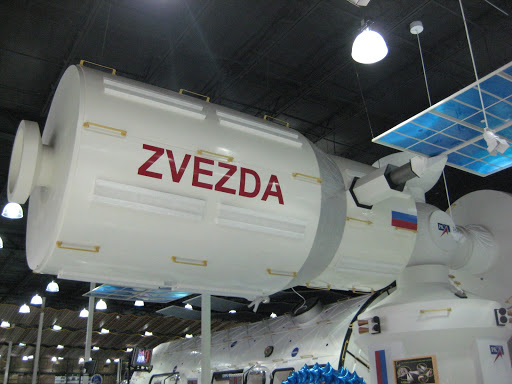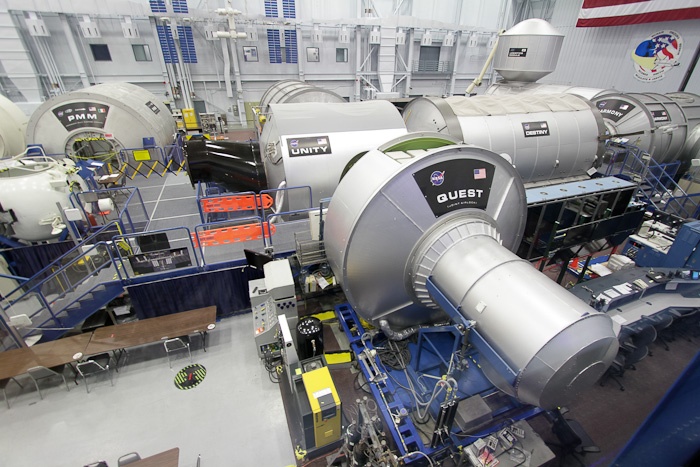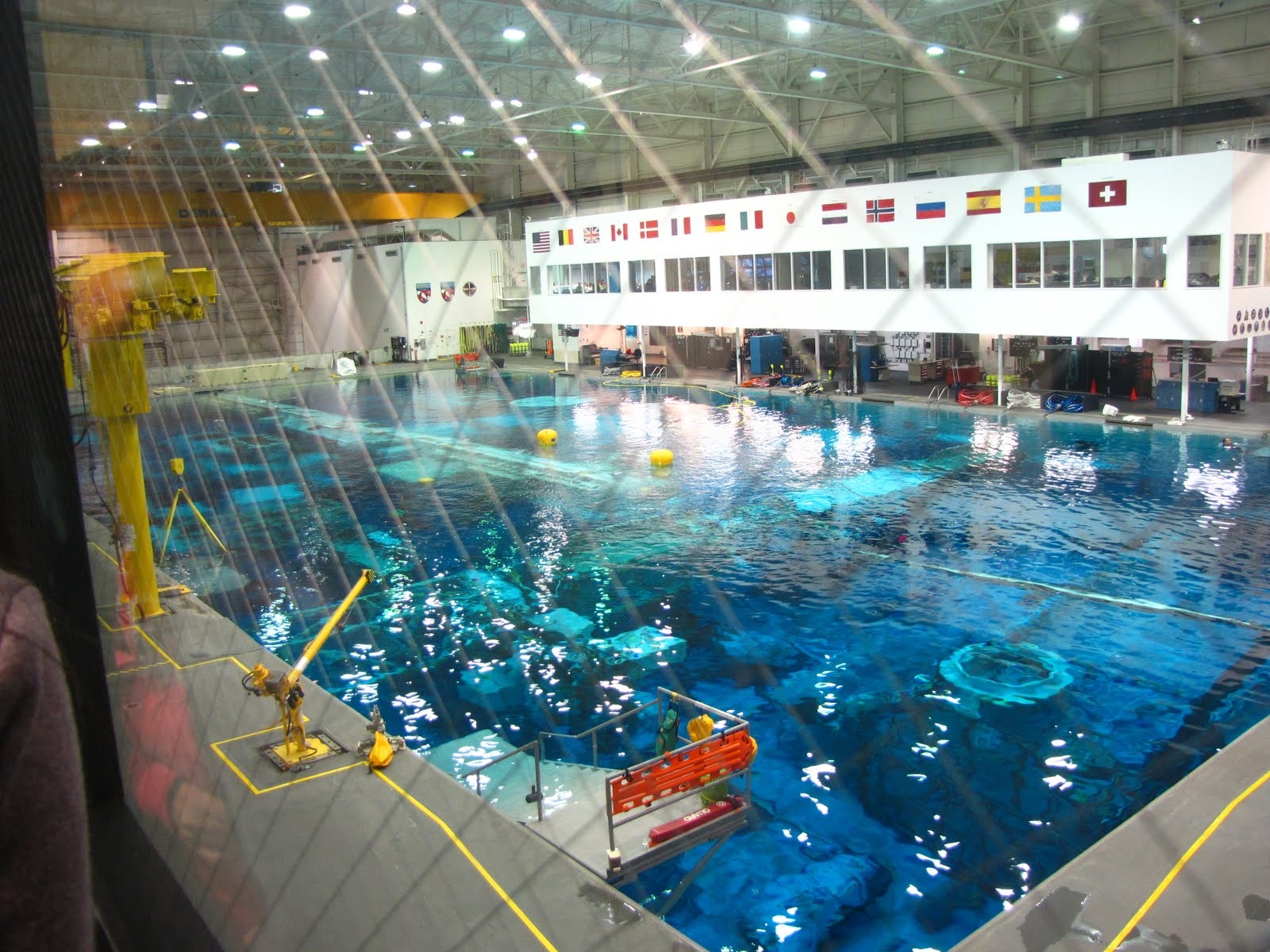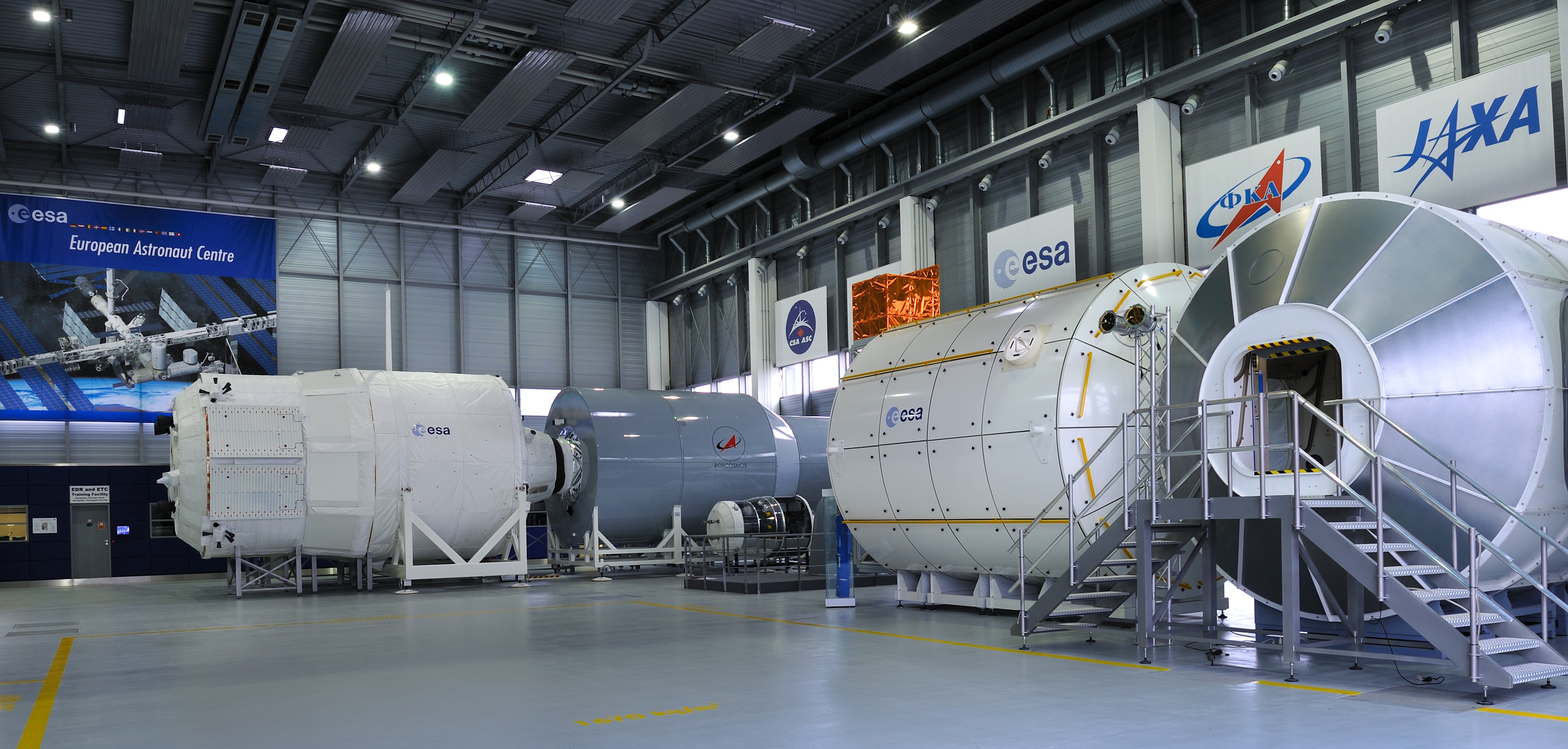ISS mockups on Earth
 One of the stages of preparation of the space station crew for flights is working with simulators and stands that help to study the structure of the spacecraft, experience endurance and psyche, learn how to solve problems in microgravity conditions.
One of the stages of preparation of the space station crew for flights is working with simulators and stands that help to study the structure of the spacecraft, experience endurance and psyche, learn how to solve problems in microgravity conditions.Flight Operations Director and NASA Instructor Robert Frost says that there is no full-size exact model of the ISS on Earth. There are installations for training work in various modules.
In general, the object closest to the full-size mock-up of the ISS (including solar panels) is suspended from the ceiling in Fry's electronics store near the center of NASA in Houston.

Photo: Heather Archuletta
Space agencies have facilities for crew training at their disposal. Such installations can be called mockups, they have a number of conventions. Not everything is in its place, something is omitted.
')
Three objects have been installed at the Lyndon Johnson Space Center. The first is SVMF (Space Vehicle Mockup Facility). When NASA was planning to build a simulator to train the crew for the flight to the International Space Station, first of all they wanted to build models of the station’s modules, completely repeating every detail, every device. This idea was analyzed and it was decided that the layout would become the “bottleneck” of the preparation process: it would not be possible to simultaneously train several teams in one installation. And building two copies of the ISS would be too expensive.
Experts have made a compromise. The SVMF object was equipped with models of all equipment with the ISS. Installation well repeats external elements, but has no electronic filling.

Another object in the Space Center is SSTF (Space Station Training Facility). This model is built to train interaction with computer systems and on-board software. The appearance of the equipment is repeated not so accurately.

Cosmonaut Elena Serova , member of the expeditions ISS-41 and ISS-42.
The difference between SVMF and SSTF is simple. The SVMF recreates many control elements of a real station, but it is useless to turn on and turn them on - there is no electronics here. At the same time, in the SSTF, photographic plugs are installed instead of these devices. You can control the equipment, but with a laptop.
Over the years, the proximity to the real station has improved. For example, SSTF and SVMF are located in different buildings. It was possible to connect computer simulators in the fifth case with SSTF with laptops in the seventh case, where the SVMF is located. But once for training in SVMF I had to resort to a PowerPoint presentation with screenshots of computer systems.
Some of the buttons and pens in SSTF were nevertheless recreated in plastic and aluminum. However, everything has its limits. Many racks remain photographs - there is no need to make a replica, since training with such equipment takes place somewhere else.
Workouts in the open space are held at the third object - NBL (Neutral Buoyancy Laboratory). It is a huge pool. Creating hydrone -weightlessness is one of the effective ways to model weightlessness. When working in these conditions, astronauts use almost the same spacesuits as in space, and the life support satchel is simulated by a full-sized mockup.

The Russian segment of the International Space Station in the layouts of NASA copied with low accuracy, because everything you need is already in Star City in Russia. Russian modules are needed only for working out the interaction in both segments of the station.
Due to the inability to recreate microgravity on Earth, it is impossible to completely replicate the interior of the station modules. The area of the laboratory in the SVMF layout is larger than the real one, since the additional row of racks contains equipment that is located on the ISS with the crew overhead.

Korean astronauts Koh San and Lee So-young .
The SSTF layout is connected to a simulator using this flight software in conjunction with an equipment emulator. For example, there is real software from Boeing, which sends commands to the Raytheon station gyros production emulators. By the way, Frost started working at NASA with this emulator.
In general, SSTF is one of the largest models for process simulation. There is a simulation of a huge number of operations: from cooling lines to computer systems that are responsible for position in orbit. The layout allows you to work out a huge number of different situations. You can enter thousands of problems into the system.
The work of the instructors is a combination of problems, since no one knows what they will lead to together. Many of the rules and procedures of flights were rewritten only because one night late at night one of the operators stayed behind the installation and accidentally discovered that the behavior of the system was different from what was intended for a certain combination of problems.
On Youtube there is a video walk on the layout - a tour from 2011.
Exact models of European modules are located at the European Astronaut Center in Cologne, Germany.

The models of the Russian modules, made with high accuracy, are located at the Yuri Gagarin Cosmonaut Training Center .

Astronauts are also training in Star City. Joseph Aqaba examines the layout of the service module "Star".
Source: https://habr.com/ru/post/394771/
All Articles